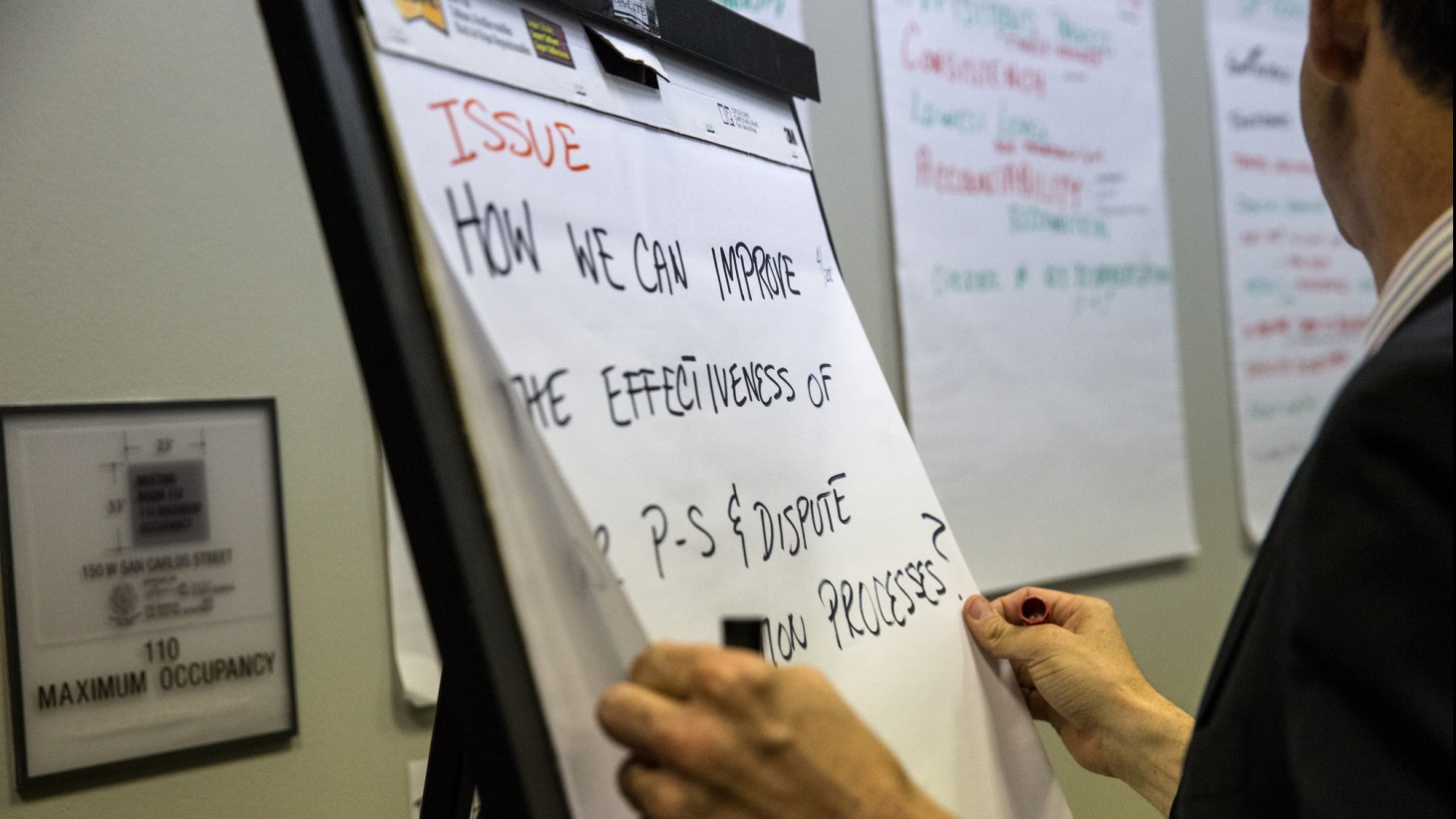Hank Q1-2017
See the whole issueMeet Your National Agreement: Settle Disputes With Issue Resolution

A new issue resolution process allows partnership disputes to be resolved more quickly.
Do people working in partnership always agree? People don’t.
Kaiser Permanente and the Coalition of Kaiser Permanente Unions resolve most differences involving our Labor Management Partnership through interest-based problem solving or interest-based bargaining.
But when the process bogs down, the 2015 National Agreement provides a way for managers, physicians, union leaders and frontline workers represented by a coalition union to move it forward: issue resolution.
Section 1 of the National Agreement covers a number of topics: how the partnership operates, unit-based teams, and such programs as Total Health and Workplace Safety. The most common disputes encountered are covered by this section. A new issue resolution process, one of three related provisions in the agreement, covers such disputes.
The process starts at the level at which an issue arises; so, for example:
- When disagreements arise at the facility level, the parties directly involved meet and use interest-based problem solving to try to resolve the issue themselves.
- If they cannot do that within 30 days, the issue may be referred to the local LMP Council.
- If there’s still no resolution, the next step is the Regional Council, and then national LMP leadership. Each body has 30 days to resolve the issue, using interest-based problem solving.
- If no solution can be reached, the question may be decided by a joint panel that includes a neutral designee.
This process is an alternative to, but does not replace, existing grievance procedures. It offers another approach to problem solving.
“It’s easy for people to get dug into their own place on an issue,” says Denise Duncan, president of UNAC/UHCP. “Partnership and the National Agreement commit us to spending the time to figure out jointly how to resolve problems and do the work.”
